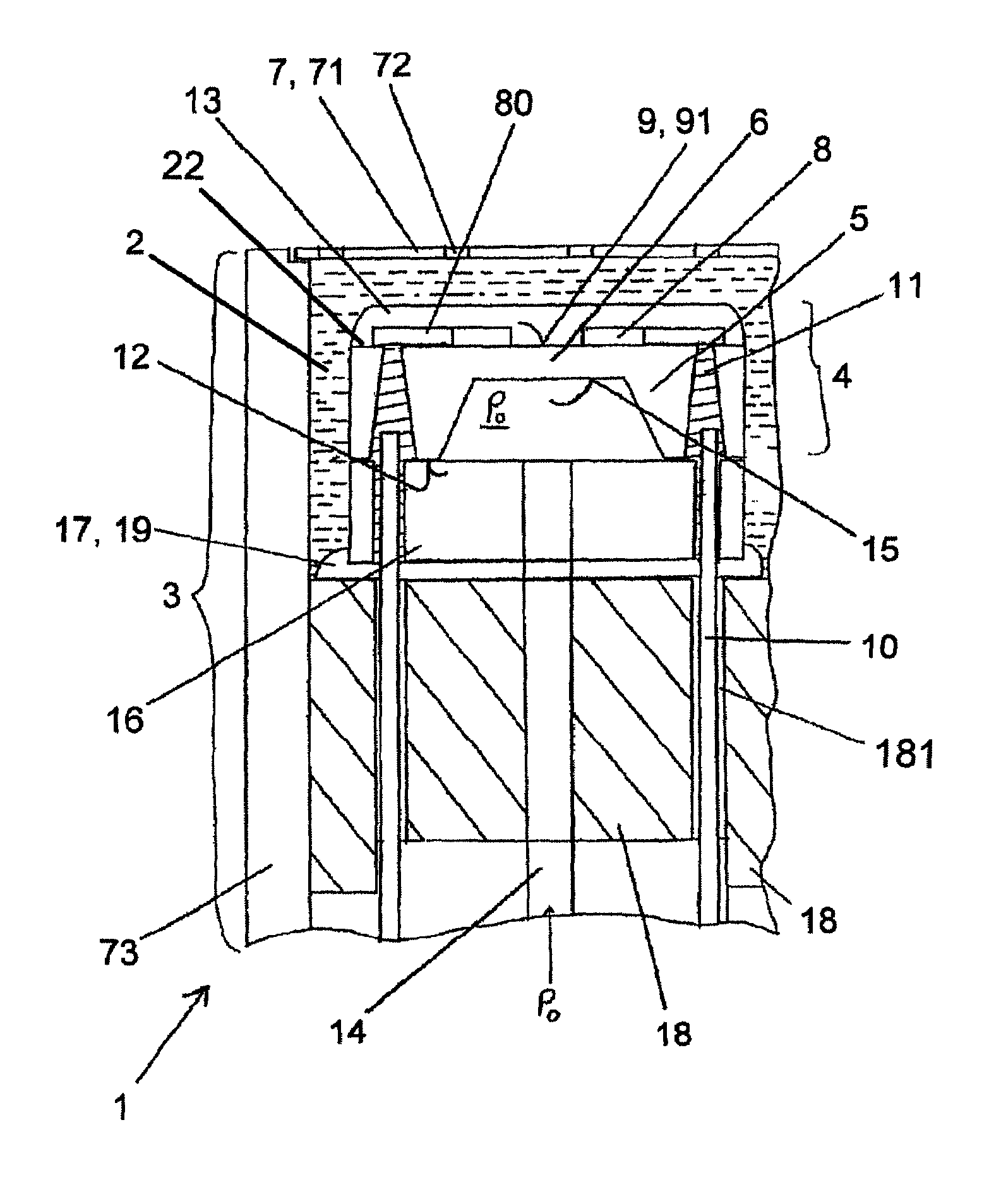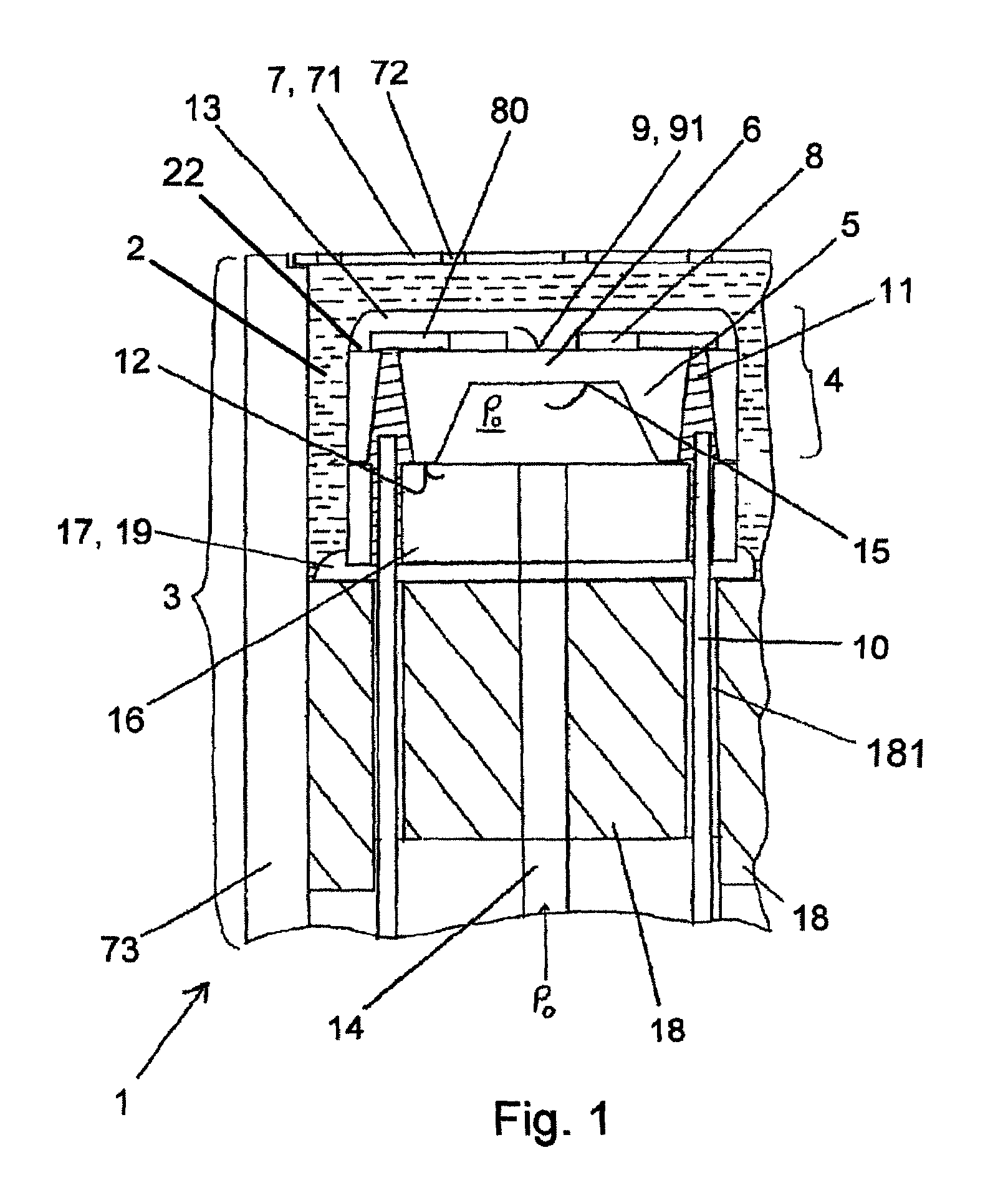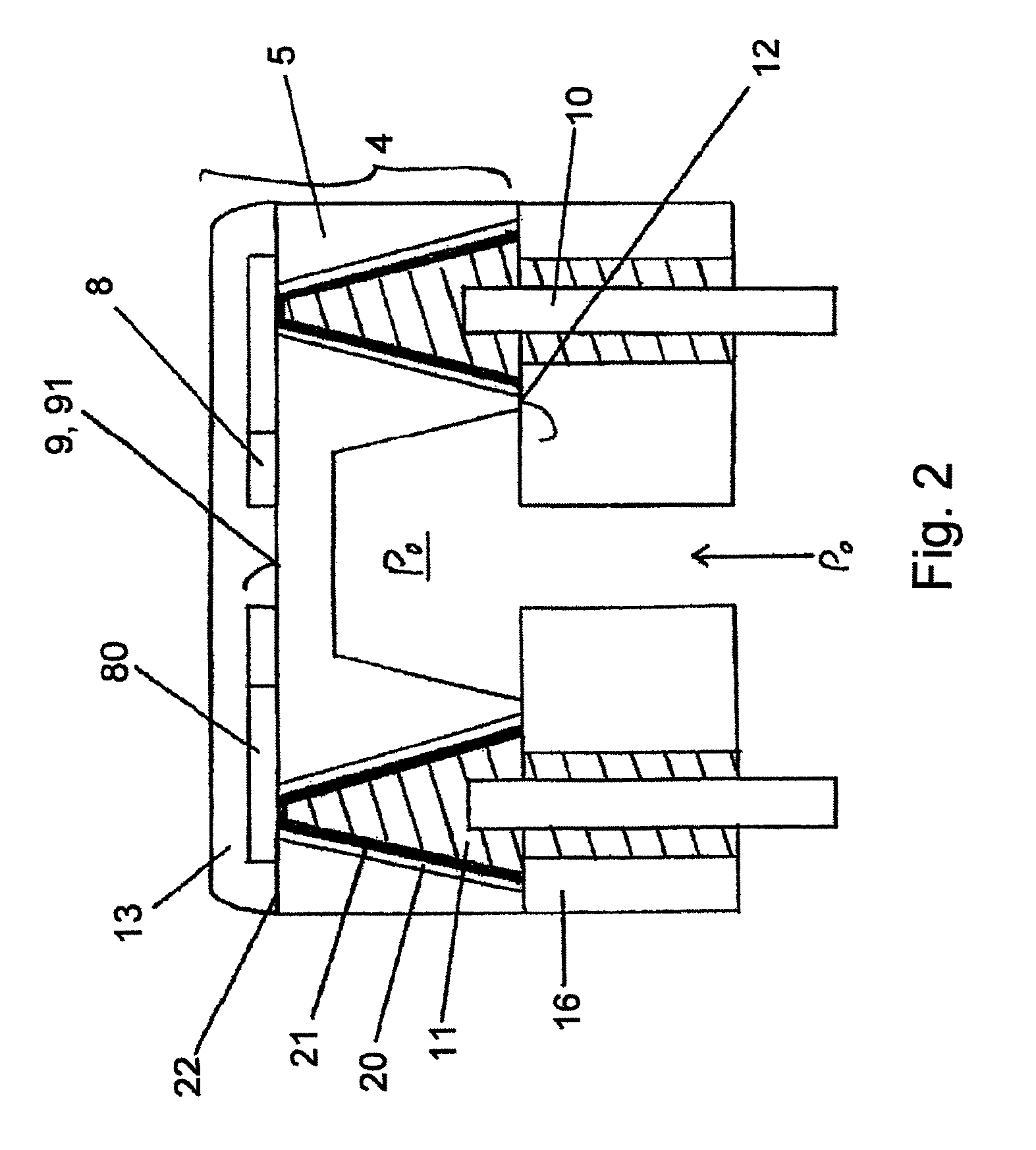Sensor unit for the measurment of a variable in a medium
a technology of a sensor unit and a medium, applied in the field of sensor units for measuring a variable, can solve the problems of inability to miniaturize such sensors, no measurement sensors are available up to now, and the actual measurement signal is completely unacceptable, and achieves the effect of being insensitive to vibration
- Summary
- Abstract
- Description
- Claims
- Application Information
AI Technical Summary
Benefits of technology
Problems solved by technology
Method used
Image
Examples
Embodiment Construction
[0066]FIG. 1 shows in a schematic representation an embodiment of a sensor unit according to the present invention, partly in section, which in the following as a whole is designated with the reference numeral 1.
[0067]The sensor unit 1 which is particularly suitable for the measurement of a measurement variable in an aggressive medium 2 comprises a sensor capsule 3 in which a sensor 4 which in the example illustrated is made from SOI is arranged for the detection of a measurement variable in the aggressive medium 2. The sensor unit 1 may be used for example for the measurement of a pressure and / or temperature of the engine oil in an internal combustion engine or of a pressure and / or temperature of the gas in a turbine.
[0068]In the present case of FIG. 1 there is shown a simple pressure sensor for the measurement of the oil pressure in an internal combustion engine. The sensor 4 comprises a sensor support 16 which in the present case is a sensor support 16 made of glass, i.e. a glass...
PUM
| Property | Measurement | Unit |
|---|---|---|
| temperature | aaaaa | aaaaa |
| temperature | aaaaa | aaaaa |
| temperature | aaaaa | aaaaa |
Abstract
Description
Claims
Application Information
 Login to View More
Login to View More - R&D
- Intellectual Property
- Life Sciences
- Materials
- Tech Scout
- Unparalleled Data Quality
- Higher Quality Content
- 60% Fewer Hallucinations
Browse by: Latest US Patents, China's latest patents, Technical Efficacy Thesaurus, Application Domain, Technology Topic, Popular Technical Reports.
© 2025 PatSnap. All rights reserved.Legal|Privacy policy|Modern Slavery Act Transparency Statement|Sitemap|About US| Contact US: help@patsnap.com



